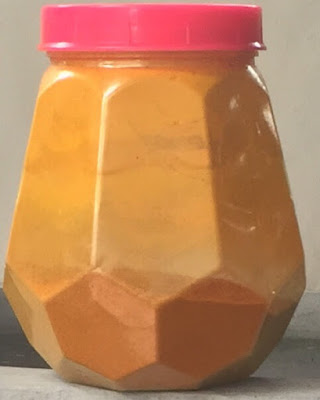Turmeric known in Europe as Curcuma,
is a rhizomatous herbaceous plant which belongs to the ginger family. In sri lanka for the most part roots of Turmeric is used in cooking and medicine. people also call this Sri lankan or local saffron. This is because it has most of the attributes of Indian saffron or original saffron which is a luxury. Since Indian saffron is a luxury that many people cannot afford, most of the time people preffer sri lankan saffron which is known as turmeric.
How Turmeric is processed in sri lanka and India
How Turmeric is processed in sri lanka and India

Turmeric plants

Mature Turmeric roots can be planted and these roots will turn into a small plant in about 6 months. When Turmeric roots are ready leaves of the plant start to dry and then die. when all the leaves are dead we know that the time is ripe for picking.
These roots are dried for about 30 minutes in the sun, afterwards they are need to be powdered untill it becomes orange-yellow. And this powder is used all over the world for coloring and as a spice in food and curries.
 |
| Tumeric powder |
Turmeric has been in use in sri lanka and India for many years and is part and parcel of Ayurvedic or indigenous medicine. Ayurvedic doctors prescribe turmeric powder for skin deseases like psoriasis and gout. In western medicine they have discovered a pain killer for cancer using turmeric powder.
A long time ago Turmeric was known as a color and then for its therapeutic and medicinal properties. Turmeric is known as a holy spice in India and has been used as part of different Hindu functions for centuries. Hindu people in Sri lanka also use it for cleansing purposes since turmeric is a good germ killer. Turmeric has assumed an imperative part in Hindu mysticism. The robes of the Hindu priests were generally hued with a yellow color made of turmeric. During Tamil celebration Pongal, an entire turmeric plant with new rhizomes is offered as a thanksgiving to Suryan, the sun god.
Many are the uses of turmeric when it comes to medicine and religion. As far as sri lanka goes turmeric is a spice that sri lankans cannot cook without. In almost all the dishes of sri lanka there is turmeric or kaha(kaha is the term locals use for turmeric). If you cook a curry with no turmeric in it and serve it to a sri lankan he will be able to tell you that the dish is missing turmeric. That is the kind of place turmeric has when it comes to sri lankans.
In sri lanka there is this potato like plant called 'mannyok'. In some countries this plant is known as 'cassava'. From those days there was a belief among sri lankans that this plant has a poison that can even capable of killing an elephant. And when they cooked this food they advised everyone to cook it without closing the pot and with lots of turmeric powder. Because from those days people knew that turmeric is a good germ killer and an anti poison agent.
A long time ago Turmeric was known as a color and then for its therapeutic and medicinal properties. Turmeric is known as a holy spice in India and has been used as part of different Hindu functions for centuries. Hindu people in Sri lanka also use it for cleansing purposes since turmeric is a good germ killer. Turmeric has assumed an imperative part in Hindu mysticism. The robes of the Hindu priests were generally hued with a yellow color made of turmeric. During Tamil celebration Pongal, an entire turmeric plant with new rhizomes is offered as a thanksgiving to Suryan, the sun god.
Many are the uses of turmeric when it comes to medicine and religion. As far as sri lanka goes turmeric is a spice that sri lankans cannot cook without. In almost all the dishes of sri lanka there is turmeric or kaha(kaha is the term locals use for turmeric). If you cook a curry with no turmeric in it and serve it to a sri lankan he will be able to tell you that the dish is missing turmeric. That is the kind of place turmeric has when it comes to sri lankans.
In sri lanka there is this potato like plant called 'mannyok'. In some countries this plant is known as 'cassava'. From those days there was a belief among sri lankans that this plant has a poison that can even capable of killing an elephant. And when they cooked this food they advised everyone to cook it without closing the pot and with lots of turmeric powder. Because from those days people knew that turmeric is a good germ killer and an anti poison agent.



